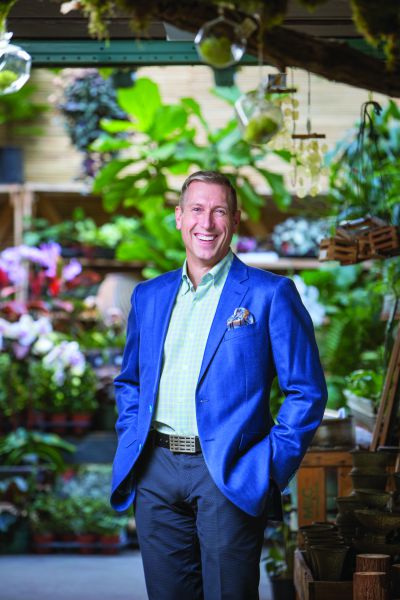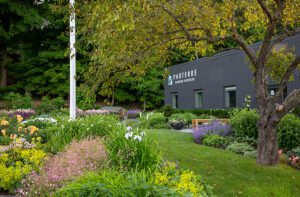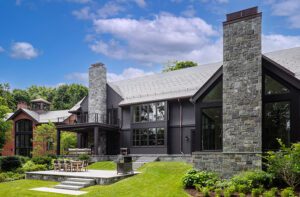Five Questions: Carey Erdman
February 21, 2017
Designer Carey Erdman explains the special challenges of and new developments in urban gardening.
Text by Robert Kiener
 1. Do you recommend perennials or annuals in a city garden?
1. Do you recommend perennials or annuals in a city garden?
Every situation is different, but I usually prefer a combination of plants and flowers, both perennials and annuals. A perennial may cost three to four times as much as an annual, but it can pay off because you don’t have to replant it each year. A negative with perennials is that they tend to bloom for just a few weeks a year at most. For color, annuals give you the most bang for your buck.
2. What advice do you have for people who can’t wait for the warm weather to enjoy some color?
We all get the itch after a long, cold winter to get some color on a front doorstep, but the frost date in New England isn’t until late May. There are plants that you can put in during April and May—pansies, flowering bulbs like tulips, daffodils, and crocuses—then when it gets warm, you can switch to summer plants. Growers are starting to show more plants that have a little more “antifreeze” in the veins, such as nemesia, osteospermum (Cape Daisy), calibrachoa (Million Bells), and some hydrangeas. These heartier plants can handle freezing temperatures, although they won’t survive heavy snows.
3. Do you recommend different plantings for people who are happy to do some upkeep themselves, versus clients who want someone else to do the maintenance?
Most people who come to me aren’t gardeners themselves, so they usually say, “We want low-maintenance plantings.” You have to be realistic about how much maintenance different plants need. For instance, there are a lot of flowers, such as dahlias, camellias, and roses, which give big, splashy blooms but need deadheading every week or two. Roses are usually high maintenance, but there are some new varieties that are disease resistant, have a lot of color, and will send up more blooms even if you don’t deadhead. Coleus and begonia are low maintenance. You can plant these at the end of May, and they don’t need much attention until fall when you take them out.
4. What are common mistakes you see in urban gardens?
Picking the right plants for the right spots means having the right light, water, and space. Thanks to trees, buildings, and other factors, up to 80 percent of urban gardens are in heavy shade. These gardens call for plants that are colorful and shade tolerant, such as coleus, impatiens, and begonias. There is also the water issue. Hydrangeas, for example, need tons of water, but lots of urban buildings may not even have spigots. Urban gardeners also have to match the size of a plant to the space available. I see a lot of Green Giant and Leyland cypress trees that start out as beautiful three-foot-tall plantings but soon outgrow their spaces.
5. What new trends are you seeing in urban garden design?
There is a growing interest in sustainability and having a lower environmental impact. More people think about retrieving rainwater, using plants that won’t have to be replaced, using more native species, and choosing plants that are good for the bees and birds. Recognizing this, growers are labeling which plants are food pollinators and are developing and breeding unique, hybridized, patented plants that come in more colors and have a longer bloom time. New technology, too, such as high-tech irrigation systems and LED lighting systems, are giving gardeners and garden designers more options. •
Erdman Design, Boston, (617) 816-6467, erdman-design.com
Share
![NEH-Logo_Black[1] NEH-Logo_Black[1]](https://b2915716.smushcdn.com/2915716/wp-content/uploads/2022/08/NEH-Logo_Black1-300x162.jpg?lossy=1&strip=1&webp=1)







You must be logged in to post a comment.